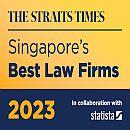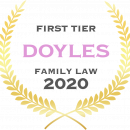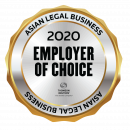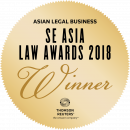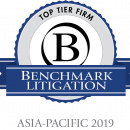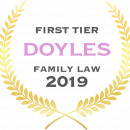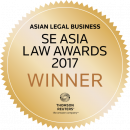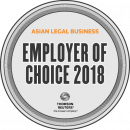E-Briefing: NFTs – Not "Fair Use" of Trademarks?
E-Briefing: NFTs – Not "Fair Use" of Trademarks?
16 Feb 2023
I. Introduction and Background
1. In one of the first ever trials to examine the interaction between non-fungible tokens (“NFTs”) – digital assets based on blockchain technology that have exploded in popularity in recent years – and IP law, a nine-person jury in Manhattan ruled earlier this month that digital artist Mason Rothschild’s NFT versions of Hermès’ famous Birkin bags, which he termed “MetaBirkins”, violated the French luxury brand’s trademark rights in their “BIRKIN” mark.
2. Hermès sued Rothschild in January 2022 claiming trademark infringement, dilution and cybersquatting, among others, following Rothschild’s release of approximately one hundred MetaBirkin NFTs depicting Birkin bags covered in faux fur, patterns and famous artworks. Rothschild had also registered the domain name “www.metabirkins.com” and social media platform handles such as “@metabirkins” on Instagram.
II. The US District Court Decision
3. Throughout this case, Rothschild asserted that his use of “MetaBirkins” is constitutionally protected by the US First Amendment and constitutes “fair use”, even going so far as likening the MetaBirkin NFTs to Andy Warhol’s famous “Campbell's Soup Cans” artwork, and pointed to the decades-old “Rogers test” established in the 1989 case of Rogers v Grimaldi.
4. Under the Rogers test, free speech rights under the US First Amendment permit an artist to use a trademark in an artwork without permission so long as the use: (1) has artistic relevance to the artwork; and (2) does not explicitly mislead consumers. In this regard, Rothschild argued that as he is using “MetaBirkins” as the artwork title of the MetaBirkin NFTs, his use of Hermès’ “BIRKIN” mark ought to be entitled to protection under the US First Amendment. Rothschild further characterised the MetaBirkins NFTs as a commentary on fashion’s “fur free” initiatives and an artistic experiment examining how society places value on status symbols.
5. On the other hand, Hermès took the position that Rothchild’s use of “MetaBirkins” did not satisfy the Rogers test. Hermès contended that Rothchild’s use of “MetaBirkins” to “identify a product line and to promote a business enterprise” constituted trademark use rather than an artistic expression – Rothschild was using “MetaBirkins” as an indicator of trade origin and therefore as a trademark. Hermès also adduced evidence that Rothschild’s endeavour was heavily commercialised and that the MetaBirkins NFTs had in fact confused the media and consumers, who mistakenly believed that the MetaBirkins NFTs were affiliated with Hermès.
6. Ultimately, the jury determined that Rothschild had infringed on Hermès’ trademark rights and awarded Hermès US$133,000 in damages.\
III. The Singapore Position
7. This case has been closely followed by artists, brand owners and legal professionals alike for its potential to shed light on how trademark laws might apply to NFTs. However, whereas the constitutional right to freedom of speech plays a pervasive role in US IP jurisprudence, such may not be the case in Singapore insofar as trademark laws are concerned.
8. Singapore trademark laws are strictly governed by the Singapore Trade Marks Act 1998 (the “TMA”). Under the TMA, there is no broad or absolute defence of “fair use” to trademark infringement as is the case for copyright infringement under the Singapore Copyright Act 2021, and neither does the Rogers test exist in Singapore IP jurisprudence. At most, a limited “fair use” defence to trademark infringement exists under section 28(4) of the TMA, which permits the use of a trademark without permission in certain circumstances, namely: (1) “in comparative commercial advertising or promotion”; (2) “for a non-commercial purpose”; or (3) “for the purpose of news reporting or news commentary”.
9. Whether a Singapore artist may invoke their free speech rights under the Singapore Constitution or otherwise to introduce the Rogers test into Singapore IP jurisprudence has yet to be tested before the Singapore courts. While there may be some latitude for the Rogers test to find its way into Singapore IP jurisprudence through section 28(4)(b) of the TMA (i.e. “for a non-commercial purpose”) – a Singapore artist may be able to rely on this provision to argue that their alleged infringing use of a trademark in an artwork constitutes use of the trademark as a “non-commercial” artistic expression rather than an indicator of trade origin – the Singapore courts would likely be slow to make such a finding on the basis of free speech rights under the Singapore Constitution.
10. Further, given that NFTs are more often than not created with the intent or purpose of commercialisation and profit, any NFT that infringes on a Singapore trademark may not be able to avail itself to section 28(4)(b) of the TMA. The relevance and impact of Hermès’ landmark victory over Rothschild on Singapore trademark laws, particularly how Singapore trademark laws might apply to NFTs, therefore remains to be seen.
IV. Key Takeaways and Conclusion
11. Authentic physical Birkin bags are renowned worldwide for being expensive and highly difficult to obtain, making them a prime choice for a status symbol. It therefore comes as no surprise that a luxury brand focused on exclusivity such as Hermès would go to great lengths to eliminate counterfeits and replicas, and even NFTs are not spared from such efforts.
12. At the moment, Singapore artists would be well-advised to exercise caution when incorporating trademarks into their artwork without permission, especially where such artwork was created with the intent or purpose of commercialisation or profit.
13. Should you require advice on trademark use or bringing or defending a claim in trademark infringement in Singapore, our IP team at Harry Elias Partnership would be pleased to assist you. Working closely with our network of associate firms, we are also well versed and have a breadth of experience handling IP matters across numerous jurisdictions.
For further information, contact:
Esther Wee
Head of IP
Harry Elias Partnership LLP
[email protected]
+65 6361 9350
Daniel Yap
Legal Associate
Harry Elias Partnership LLP
[email protected]
+65 6361 9862
